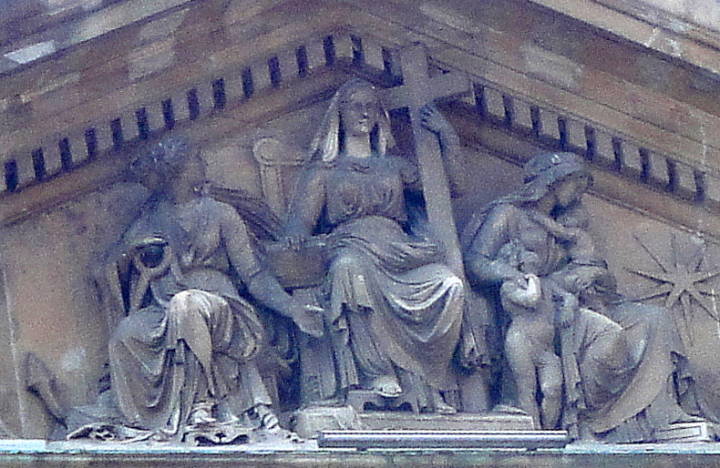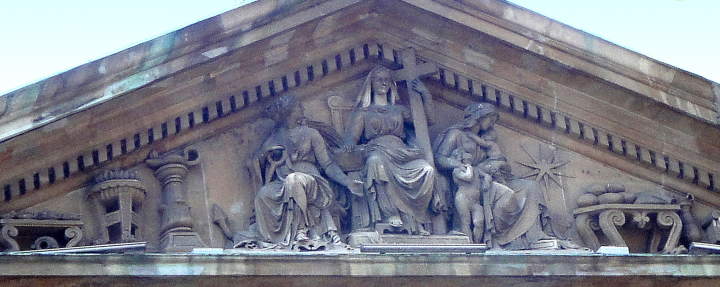
Faith, Hope, and Charity (1873-74) by an unknown sculptor on on the pediment of the City Temple, Holborn, London. Bath stone. Architects: Lockwood & Mawson. Faith sits enthroned in the center, holding a cross, while Hope has an anchor, her standard symbol or attribute, and Charity embraces two children, again a standard representation, though sometimes Charity is shown nursing a child. All three theological virtues rest one of their foet on a differently shaped footstool, the meaning of which, if any, is not clear. As an evangelical church whose roots go back at least to seventeenth-century Puritans, the City Temple congregation and ministers would not use much standard Christian iconography associated with the High Church and Roman Catholicism, but Faith, Hope, and Charity (or more properly, caritas, the love of things of this world for the divine in them) did not have these associations.


The City Temple (1873-74), Architects: Lockwood & Mawson. Holborn, London. Bath stone. [Click on these images for larger pictures.]
Photographs by Robert Freidus. Formatting, perspective correction, and text by George P. Landow. You may use this image without prior permission for any scholarly or educational purpose as long as you (1) credit the photographer and (2) link your document to this URL in a web document or cite the Victorian Web in a print one.]
Bibliography
“The History of City Temple.” City Temple Church and Conference Center, Holborn Viaduct. Web. 26 July 2011.
Ward-Jackson, Philip. Public Sculpture of the City of London. Liverpool: Liverpool University Press, 2003.
Last modified 4 March 2024